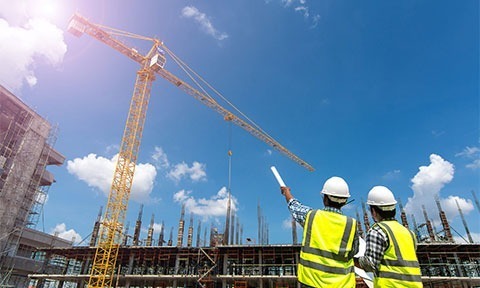Structural Dynamics and Aeroelasticity
- Course focuses on aerospace engineering problems, dynamics of complex systems, and aeroelasticity. Engineers and scientists in aeronautical structures benefit. The course balances established theories with innovative technologies. Covers variational approaches, normal mode analysis, and applications to aerospace engineering problems. Discusses divergence, flutter, gust loads, and aeroelastic testing in aircraft design.
Overview
The course focuses on applying quantum mechanics and mechanical vibrations to aerospace engineering problems. It covers deriving differential equations of motion using Lagrange’s equation and Hamilton’s principle, as well as analyzing aircraft wing divergence, flutter, and response. The course also discusses the impact of gust loads on aircraft design and explores the use of novel methods and technologies, including non-linear control systems. Engineers and scientists involved in aeronautical structures design, operation, and assessment are encouraged to attend for a balance of theory and practice.
Who should attend
Engineers, scientists, personnel from aerospace companies, academia.
Course Content
About the Course
The course will start off considering the evolution of time in the wave function, quantum mechanics and mechanical vibrations. The theory above will then be applied to a range aerospace engineering problems.
The derivation of governing differential equations of motion of complex dynamical systems will be highlighted using Lagranges’s equation and Hamilton’s principle. Some illustrative examples will be provided. Next the divergence, flutter and response analysis of aircraft wings will be given precedence.
The effects of gust loads is an area of intense activity in aircraft design to satisfy some of the
stringent airworthiness requirements. The ways in which novel methods and modern technologies can be applied to such problems will be discussed in detail. The discussion will also include the use of non-linear control systems and estimation of aeroservoelastic behaviour. The hardware requirements and tools needed to analyse such
problems will also feature in the discussion.
Who Should Attend
Engineers and scientists involved in the design, operation and assessment of aeronautical structures. Personnel from aerospace companies, classification societies and academia will all benefit from attending this course. The course will bring together established theories and innovative technologies with a careful balance of both theory and practice.
PROGRAMME
Day 1
09.00 – 10.30 Lecture 1: Introduction to variational approaches Hamilton’s principle leading to Lagrange’s equations Prof Atul Bhasker
10.30 – 11.00 Break
11.00 – 12.30 Lecture 2: Linear dynamics and normal mode analysis, Rayleigh’s principle. Prof Atul Bhasker
12.30 -13.30 Lunch
13.30 – 15.00 Lecture 3: Applications to aerospace engineering problems. Prof Atul Bhasker
15.00 – 15.30 Break
15.30 – 17.00 Lecture 4: Motions of complex dynamical systems using Lagrange’s equation and Hamilton’s principle with illustrative examples Prof JR Banerjee
Day 2
09.00 – 10.30 Lecture 5: Divergence and flutter analysis of representative wing sections. Prof JR Banerjee
10.30 – 11.00 Break
11.00 – 12.30 Lecture 6: Flutter and response analyses of cantilever wings and whole aircraft configurations
Prof JR Banerjee
12.30 – 13.30 Lunch
13.30 – 15.00 Lecture 7: Gust Loads Alleviation Prof Jonathan Cooper
15.00 – 15.30 Break
15.30 – 17.00 Lecture 8: Aeroelastic Testing Prof Jonathan Cooper
17.00 End of Course
Content of the lectures:
Lecture 1: Introduction to variational approaches Hamilton’s principle leading to Lagrange’s equations
Introduction to calculus of variations: increment vs comparison. Hamilton’s principle. Applications to finite degrees-of-freedom mechanical systems. Continuum problems. Field equations, geometric vs natural boundary conditions. Examples.
Lecture 2: Linear dynamics and normal mode analysis, Rayleigh’s principle.
Synchronous motion for discrete and continuum problems. Normal modes. Generalised eigenvalue problems. Qualitative behaviour of eigensolutions in structural dynamics, Rayleigh’s principle and introduction to Rayleigh-Ritz method.
Lecture 3: Applications to aerospace engineering problems.
Examples of normal mode analysis to aerospace structures and components. Approximations. Introduction to modern
computational techniques.
Lecture 4: Motions of complex dynamical systems using Lagrange’s equation and Hamilton’s principle with illustrative examples
The presentation will provide an insight into, understanding of and skill in Lagrange’s equation and Hamilton’s principle when deriving governing differential equations of motion of complex dynamical systems. Some aspects of variational methods will be discussed. Several illustrative examples will be given. Comparative formulations using Newtonian mechanics will also be addressed.
Lecture 5: Divergence and flutter analyses of representative wing sections.
The focus of this presentation will be on an appreciation of the main disciplines of aeroelasticity in aeronautical design by comprehending typical aeroelastic problems such as divergence and flutter. The initial emphasis will be on coupled pitching- plunging equations of motion of typical wing section model. The lecture will include theoretical development and formulation of divergence and flutter problems illustrated by numerical results.
Lecture 6: Flutter and response analyses of cantilever wings and whole aircraft configurations
The main emphasis of this presentation will be on response analysis. To this end, mode shapes using generalised coordinates will be utilised to formulate the problem. The generalised mass, stiffness and force matrices will be developed in modal coordinates and the resulting equations of motion will be solved in the time domain. Numerical examples with particular reference to aircraft structures will be provided.
Lecture 7: Gust Loads Alleviation
An overview of gust load requirements in the airworthiness regulations and effect that this has on aircraft design. Overview of passive and active methods for the alleviation of gust loads and illustrations of
technologies from recent research
Lecture 8: Aeroelastic Testing
An overview of aircraft certification process for flutter and loads. Hardware requirements. Overview of recent test campaigns for wing tunnel and flight flutter testing
Duration: 2 Days
Cost:£750 + VAT



